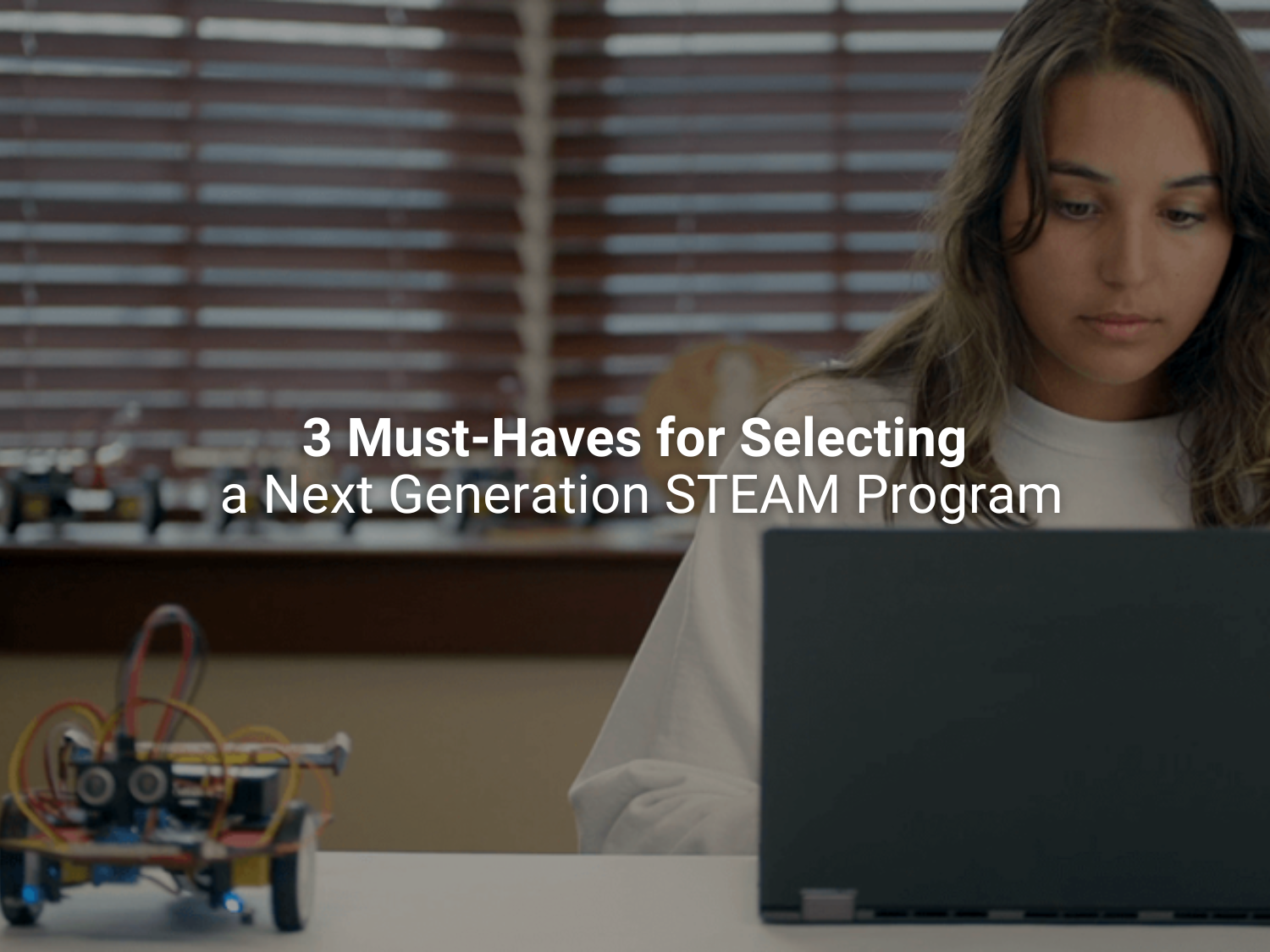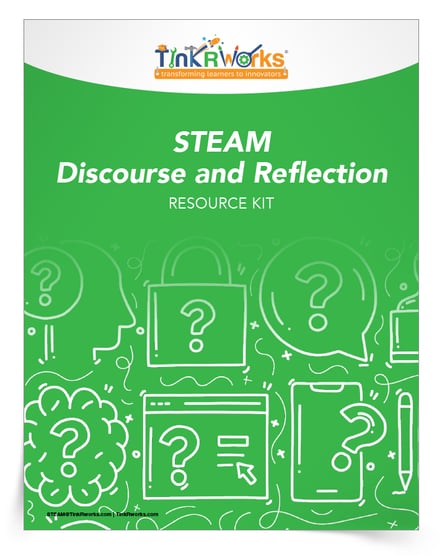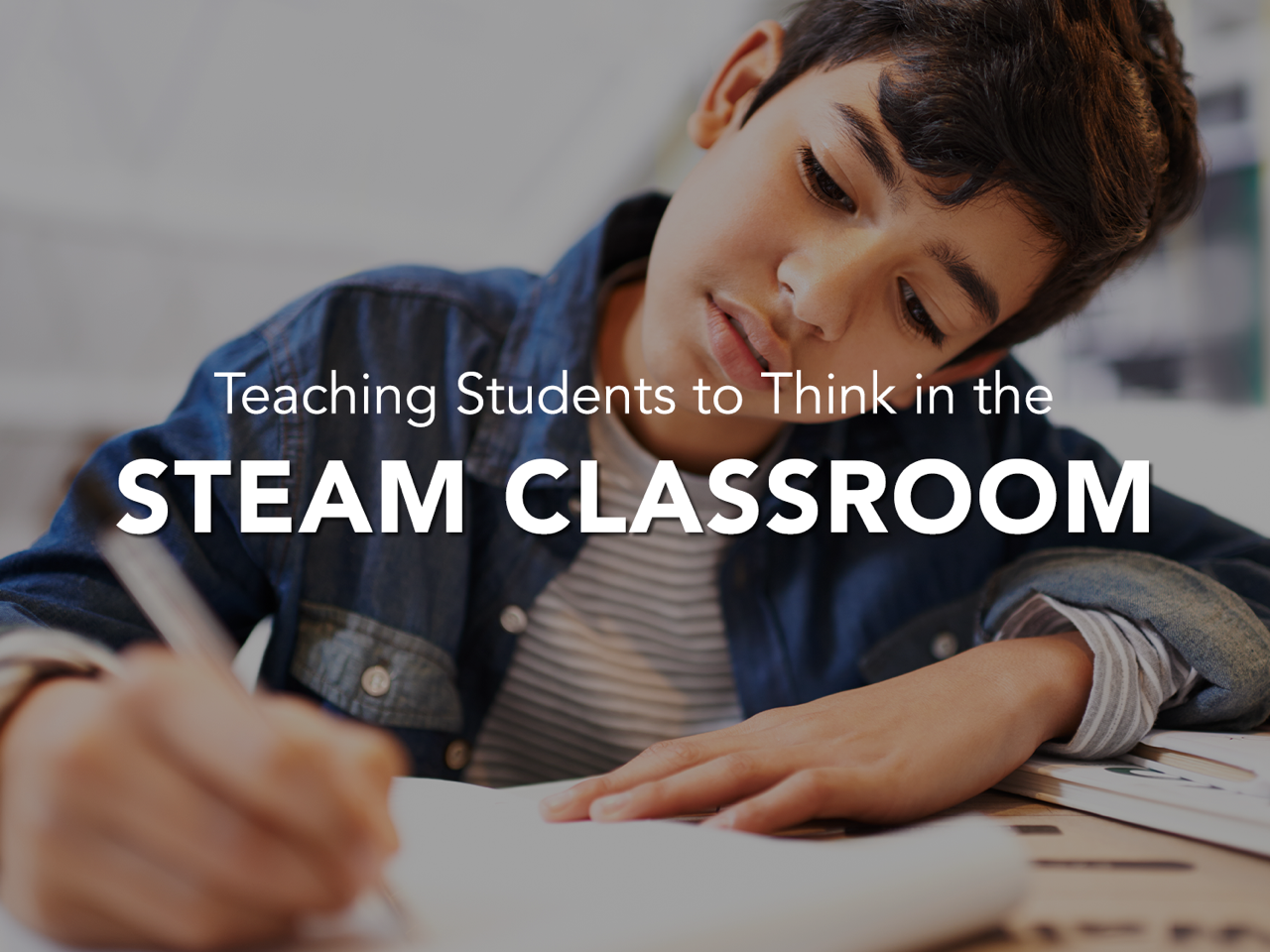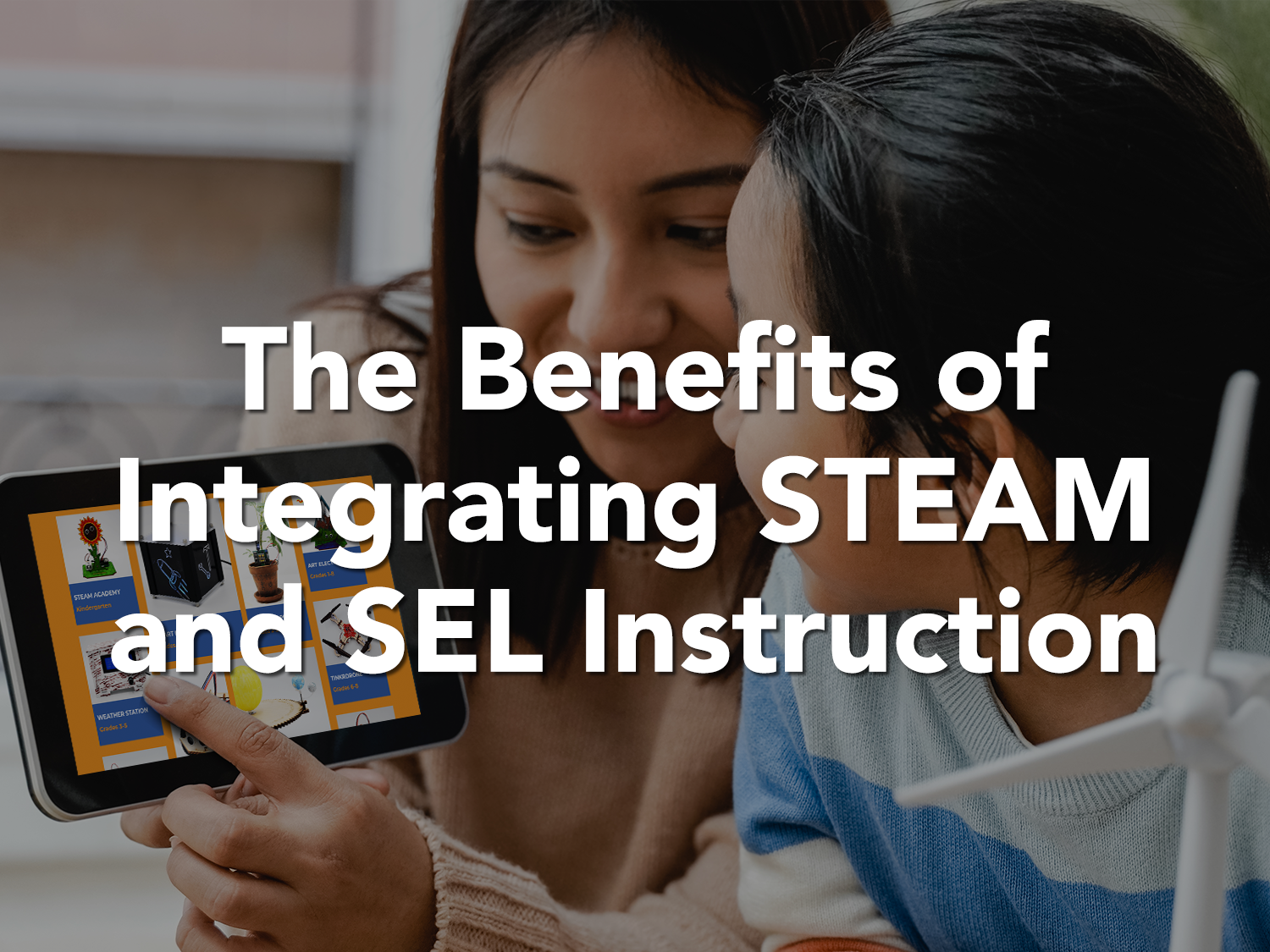3 Things to Keep in Mind When Selecting a Next Generation STEAM Program

STEAM (science, technology, engineering, art, and math) education is a great avenue for teaching students problem-solving skills across disciplines using real-life, collaborative processes. When looking to implement a STEAM program it is critical to see the connections between the disciplines—math, science, technology, engineering, computer science, and the arts. Using these connections, STEAM curriculum creates an exciting pathway for students to become the next generation of innovative and creative problem-solvers. With this backdrop, what should educators focus on and prioritize when selecting or creating their own program?
3 Must-Haves for Selecting a Next Generation STEAM Program
#1 Create a clear mission statement to guide your process
Schools should start with their mission/vision to guide them through the process. Schools with an already aligned curriculum are at an advantage because they can examine outside resources through this lens, to ensure that the curricular standards of the STEAM product align with the mission. If a school has not gone through its own standard alignment, it is best practice for them to commence the process and to provide teachers with the resources (time, professional development, and workshops) to do the work needed. A school should make sure to choose a STEAM program that is standard-aligned and should look at programs that have specific and explicit curriculum connections to the arts. This is critical, as STEAM programs, unlike typical STEM programs, value primarily the connections these disciplines have with ELA, music, theater, and most visual and performing arts.
#2 Foster and promote collaboration
%20(Instagram%20Story)%20(1080%20%C3%97%201080%20px).png?width=1080&height=1080&name=Add%20a%20heading%20(1080%20%C3%97%201080%20px)%20(Instagram%20Story)%20(1080%20%C3%97%201080%20px).png)
Schools should engage with a program that actively and explicitly emphasizes collaboration and partnership with students and teachers in the learning journey. Look very carefully at how teachers are asked to engage with both each other and their students. The best STEAM programs are inquiry-based and focus on solving a problem through active and collaborative activities and goals. The “end-game” is not merely to solve the problem, but rather to widen the scope of how students and teachers use critical thinking and collaboration in their problem-solving journey. These lessons learned will ultimately lead to better solutions as well as open the door to more questions and opportunities to meld together what used to be typically referred to as “interdisciplinary education.”
To help you create and foster a collaborative STEAM environment, download our STEAM Discourse and Reflection Resource Kit. The kit includes a Discourse and Reflection journal that assists with collaboration on projects.
#3 Build a cohesive structure to connect projects
Regardless of whether a school creates its own STEAM program or utilizes outside resources, the “scope and sequencing” of curriculum is crucial to long-term success. STEAM programs should not be “one-off” activities in a grade or class. The major goal of the curriculum is to connect the dots between subjects, disciplines, and solutions. A successful STEAM program will be built from the bottom up, whereby students are learning skills which develop and become more sophisticated and developmentally appropriate over time. Having students simply build a robot or drone in 7th grade is not a next generation STEAM program. A school should strive to have STEAM based projects/curriculum at every grade level, again aligning the standards across the disciplines and building upon the skill sets utilized in each grade. Aligning mission and standards, emphasizing partnership and collaboration, and building a sequential curriculum are three critical top of mind components of successful STEAM programs.
TinkRworks projects are designed to help learners build upon knowledge through a variety of related projects. These projects help students connect concepts, terms, and skills to context in the real world, which ultimately reinforces their learning. Browse the TinkRworks | K-8 STEAM Project Catalog to learn more.
In Conclusion
A clear purpose, collaboration, and cohesion are some of the keys to success in STEAM. Map your plans for the program using these guiding principles. Then, using this foundation to guide you and your school, you can create a STEAM program that benefits students and teachers alike!
TinkRworks has plenty of resources to help you continue along the process of building and implementing a high performing STEAM program that connects with all of your students. To keep you on track throughout the school year, download our free checklist to help you create a highly successful STEAM PBL program.
-1.png?width=350&height=89&name=TinkRworks%20Logo_Learners%20to%20Innovators%20V2%20(1)-1.png)



